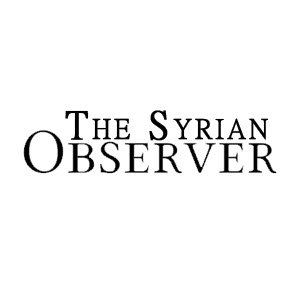It is now four days since Kobani started bleeding, weeping and migrating to Turkey.
Kobani's countryside extends 50 kilometers to the south of the border with Raqqa governorate, 70 kilometers to the east to reach Tal Abyad, the main center for the Islamic State connecting Kobani to al-Hassakeh, while in the west, the Euphrates separates Kobani from Jarabulus where we find Arab, Turkmen and Kurdish villages side by side.
All of the 400 villages of the Kobani region are populated by Kurds, except a few villages on the banks of Euphrates populated by Arabs.
How PYD took control over Kobani
Since the outbreak of the Syrian revolution, Kobani has demonstrated in solidarity with the other Syrian cities like Homs and Daraa. The number of demonstrators reached 25,000 at times, especially on Fridays or when massacres were committed in other cities, like that in Talbiseh.
But the demonstrations took a new path when the Democratic Union Party (PYD) – the Syrian branch of Kurdistan Worker's Party (PKK) – resolved its dispute with the Syrian regime about the arrest of the PKK leader in February 1999, after the agreement between the Syrian regime and the Turkish government, called the Adana Agreement.
The leader of PYD, Saleh Muslim, is from the Barazi family and was born in Sheran (also known as Aslan Tash), five kilometers east of the city of Kobani. Muslim was sentenced to death before the Syrian revolution, but after the reconciliation between the regime and PYD, he was allowed to enter Syria.
New flags began to appear, different from the Kurdish flag adopted in Kurdistan region in the north of Iraq. Then, the PYD banned the demonstrations of the Local Coordination Committees under the pretext that Friday demonstrations are for the followers of "Adana Arour and Erdogan's government". Consequently, Kobani activists were accused of being agents for Turkey.
Masked armed men appeared in the demonstrations, escorted by guards and spoke with the different accents to the Kurds of Iraq, Iran and Turkey. The demonstrations of the city were divided between two parties: the Kurdish National Council demonstrations, and PYD demonstrations, where the pictures of Abdullah Ocalan (the imprisoned PKK leader) were raised.
The murder of the activist, Welat Hissi:
In one Friday demonstration in 2013, organized under the name of "It is time to march to Damascus" – four people were injured when PYD armed forces opened fire on the demonstrators. Among them was Welat Muhammad Saleh Hissi (18 years old). Though Hissi was taken to a hospital in Gaziantep in Turkey through Jarabulus border crossing to receive medical aid, he died due to the complications to his severe injuries.
It is worth noting that the PYD had banned the Local Coordination Committees activists from organizing Friday demonstrations and from raising any signboard supports the Syrian revolution. After this accident, many activists were kidnapped and beaten severely by unknown masked men.
The official handover of Kobani to PYD:
After an agreement between the regime and the Democratic Union party, Kobani came under the official control of PYD which commanded the governmental directorates and security branches. This step seemed to be part from a greater deal to give up all the Kurdish regions to the PYD.
Consequently, the party declared the 'Revolution of Western Kurdistan' and began to establish a parliament, in addition to some other institutions like the security forces (Asayish), Women Protection Units, Women Union, Youth Union and other institutions like People Courts, People Houses and the Families of Martyrs institution.
Translated and edited by The Syrian Observer
......


